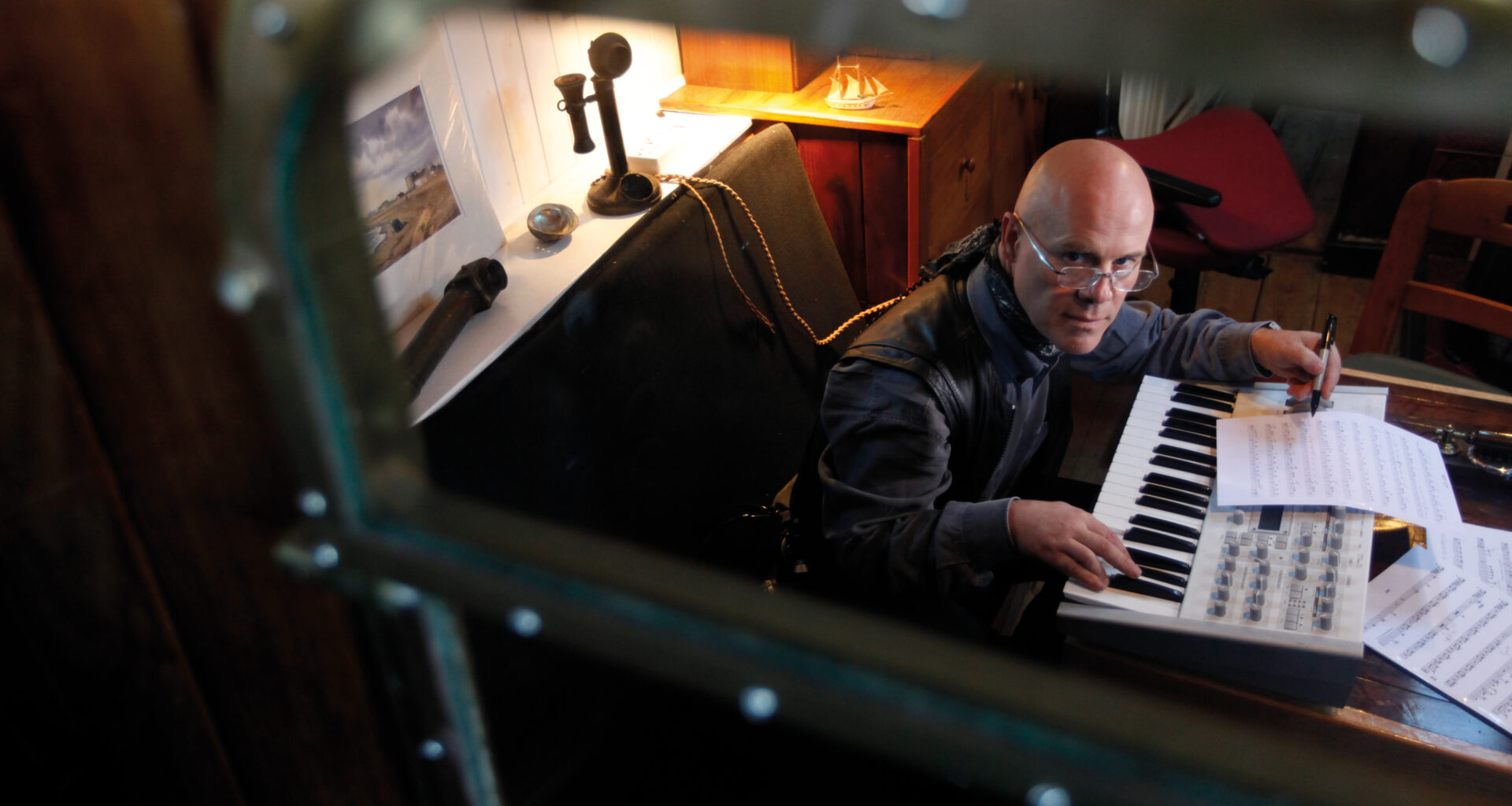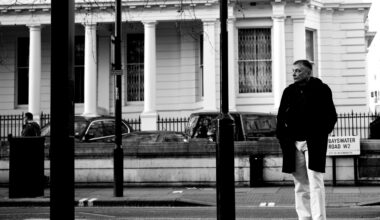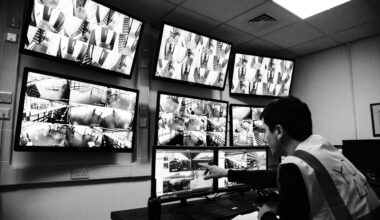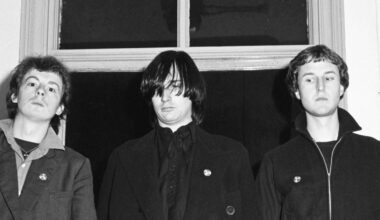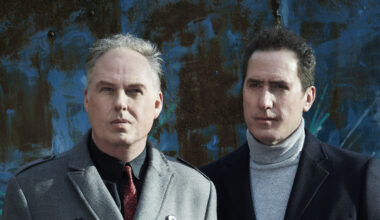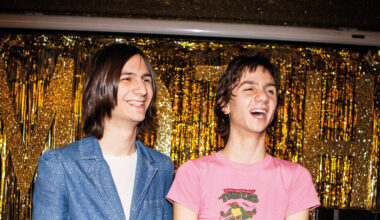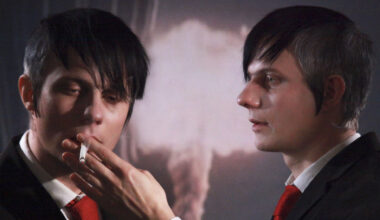If we had our way, Thomas Dolby’s biography would be an essential text for music fans everywhere. Book tokens at the ready folks, you’ll need them after our whistle-stop tour through his life less ordinary…
Sex, drugs and rock’n’roll are the usual elements in any great music biography, but what about synths, ducks and specialist software? That’s the gist of ‘The Speed Of Sound: Breaking The Barriers Between Music And Technology’, the biography of Thomas Dolby, which has recently appeared in paperback for the first time.
Dolby, whose real name is Thomas Robertson, was the art-punk upstart who became a global popstar before pioneering audio software and, eventually, mobile phone technology, all in just over two decades.
“Originally, a publisher approached me to write a sort of music business, tech guru type of guide,” Dolby says during an early morning call from his New York base. “That didn’t appeal to me much, but it did prompt me to go through some old drawers and dig out my ancient Filofaxes, PalmPilots and meeting notes.”
Scanning years of memoirs, it struck him his life could make a pretty good read. Bizarrely, he’d never thought of it in those terms until the project had been suggested.
“At the time, I didn’t see the big picture, I just blundered my way through it all,” he says. “It was interesting to read journal entries. It made the story sort of compelling.”
“Sort of compelling” is an understatement. Split into two parts, ‘The Speed Of Sound…’ begins with Dolby’s pop years, during which a career path quickly develops for the 22-year old after teaming up with Lene Lovich (he wrote ‘New Toy’ for her 1981 EP of the same name). Soon he’s an in-demand synth player, songwriter and arranger, headhunted by increasingly impressive figures, from Foreigner to Michael Jackson, and the Live Aid organisation.
The second part of the book details another remarkable trajectory: Dolby tries his hand at technology, becoming a start-up maverick in Silicon Valley and, eventually, landing a key role in the dominance of Nokia.
A married father of three and a practicing professor at John Hopkins University, Baltimore, Dolby has never been content to stand still. Now he has his eye on the next tech prize: virtual and augmented reality.
‘The Speed Of Sound…’ is a fairly modest volume, clocking in at 288 pages, but it’s packed with information. How long did it take you to put together?
“It was about a year and a half. I had my journal entries and meeting notes, then in addition there were points of reference I could get from the internet, or from old newspaper or magazine articles. Putting a timeline together wasn’t too hard, and in many cases I had to get in touch with people from my past and see what their memories were. It’s interesting how people’s memories get blurred on the same event that you were at.”
You were a teenager living in London in the late 70s. What a time to be around youth culture and music, and what a time to live next door to the EMS synthesiser shop…
“London was a real melting pot at the end of the 70s. There was a strong rebellious streak brought about by politics and the economy, and its embodiment was punk rock and new wave, which were reacting to how rock had become quite corporate. But whereas punk was very much, ‘Buy a cheap guitar, plug it in and turn it up to 11’, electronic music was studious and quite rarefied. The machines were expensive, hard to programme and unreliable, but it had so much promise. It was the first time that pop music had been made entirely with knobs and dials, as opposed to guitars and drums, which had ruled for several decades already.”
Were you always into science and tech?
“I think so. I liked getting my hands on something that nobody else had, and then finding a novel use for it. From quite early on, I imagined a role for myself in this sort of dystopian, parallel universe where I was the distant, underground, broadcaster-inventor type. It was the perfect era to be doing that. The new wave was grabbing the headlines and yet there was this undercurrent of people trying to make pure electronic pop. It took a few years before people like Gary Numan, The Human League and Soft Cell really crossed over to ‘Top Of The Pops’. For a long period, it had this sort of DIY ethic to it, which was really thrilling.”
Back then, the nation would get a dose of science immediately before ‘Top Of The Pops’, thanks to ‘Tomorrow’s World’. Was that an influence on you?
“Yes, it was. There were some seminal moments, such as when they first showed the Fairlight sampler. Another time, waveforms were drawn on the screen; the same waveforms that eventually became the famous Joy Division album cover. Then there was the idea that you could play tunes with a sheep’s bleat and take samples of actual sounds and use them as rubber stamps for creating whole new types of music. That was very, very novel.”
What was the appeal of playing a synthesiser over being in a regular rock band?
“I’m really a hermit with a very slim exhibitionist streak and composing on a synth is less of a social thing than being in a band. Bands are like, ‘Let’s all pile in the back of a transit van and head off to London for a gig’ kind of thing. Electronic music is a lot more isolated. And then there’s the fact that electronic instruments have no knowledge of each other. You don’t programme a drum kit and the bass part responds to it naturally and organically in a room. You don’t get that interaction. All the component pieces have no knowledge of each other beyond the tempo that they’re running at, so it’s up to the programmer to be the master of the universe, which suits somebody as introverted as I am.”
Everything happened quite quickly once you were signed. You built up your “boffin adventurer” character, but you were restless with the early success around ‘The Golden Age Of Wireless’ and started looking at music production and other pursuits…
“I’m just very easily distracted. I could sense the frustration of the A&R men and managers around me who would have rather I’d hunkered down and trotted out another dozen or so cookie-cutter versions of ‘She Blinded Me With Science’ or ‘Hyperactive’. That’s very much the industry formula; once you breakthrough, you distill that pop formula, get yourself well-established with half a dozen simple variations on a theme before you start indulging yourself in organic, atmospheric solo albums about rainforests and things.”
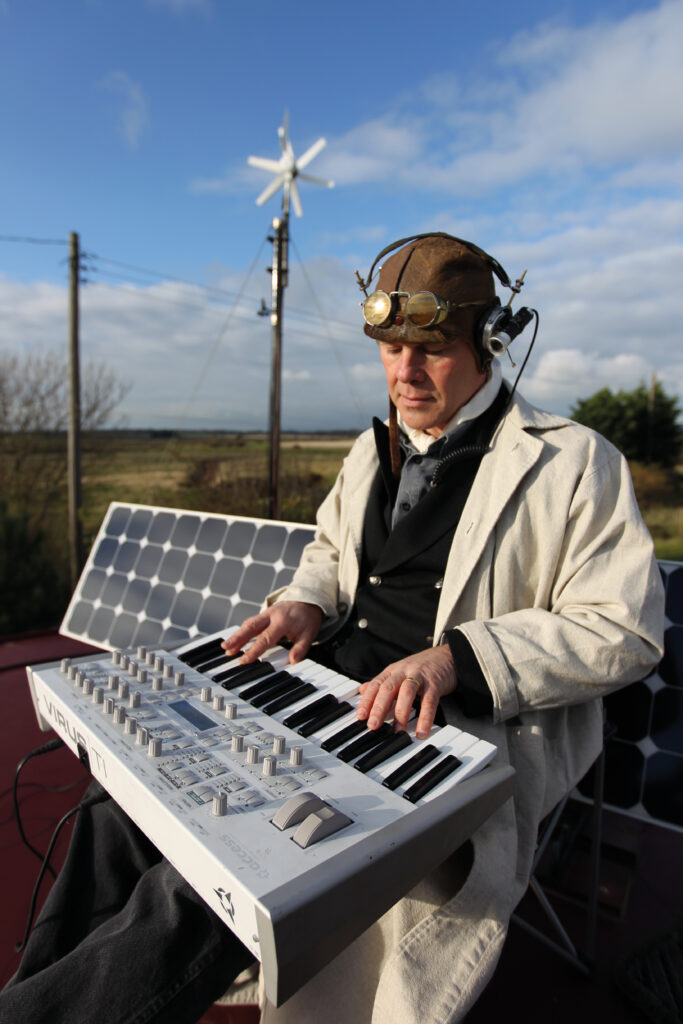
So you produced Prefab Sprout, wrote songs for other people, became an arranger… most notably for David Bowie at Live Aid.
“I wasn’t one to hang around. It was a bit like Monopoly; every square you land on you buy into it. So if I got an offer to go and meet Michael Jackson, or go and jam with Stevie Wonder or David Bowie then, you know, I was on the first flight out. Many of these people are my heroes and I was fascinated with the fact that they saw something in me that was unusual. These were all people who had their ear to the ground. I think I tended to get drawn to people like that, who wanted to spark something off me. I found it stimulating; it drew on my creative resources to find an intersection of musical styles with a given person in a room.”
You found a home in the US, stepped off the performance treadmill and ventured into composing film soundtracks, such as George Lucas’ ‘Howard The Duck’, and scores for video games…
“‘Hyperactive’, which had been a huge hit in the UK, was a massive flop in the States. Things had conspired against me in the way they sometimes do in the music industry, and I was comfortable with the fact that I was one more pawn. I’d never really set out to be a commercial artist to begin with. I’d always felt I was a marginal, avant-garde fringe artist. I had to move on and find the next field that stimulated me and got my creative juices flowing. And that turned out not to be the music industry at all. It was the emerging internet and the world of software programming.”
We listen to sound all the time through our devices now, but in the 80s, computers were set up to silently compute. As the 90s dawn, you had an idea to change that…
“Most computer companies didn’t want to have speakers in their products because they felt that sound would annoy the guy in the next cubicle. I felt that when the web came along it needed to combine the best of television with the best of computing. Sound was a big part of it because sound is where the warmth and the human connection come in. So I was trying to sell this idea to technology companies who had never dealt with sound before. Early on it was very hard. It only started to get easier at the point when so much prospective hype was going on around the web, that no stone was left unturned. People were willing to invest in any wacky idea that might turn out to bear fruit. By the mid-90s, if you could jot down a business plan on the back of a paper napkin at a lunch, you could get an investor to write you a cheque. I took advantage of that and set up my company, Headspace, to explore the possibilities.”
You developed a music plug-in for web browsers called Beatnik. Your aim was to “songify” the web…
“It was effectively a sort of music HTML, where you could ‘songify’ pages using tiny samples and real-time MIDI commands that would trigger samples. It never really caught on in a big way, probably because it took too much skill to make it sound good. Completely by accident we created the most efficient software synthesiser in existence. It so happened that a company called Nokia needed a software synthesiser to make polyphonic ringtones in their phones. That was the first time my company ever came up with a business strategy that had some revenue.”
And so the boom in buying ringtones began and you and Nokia were kings…
“For years we’d been struggling with the fact that nobody on the internet wanted to pay for anything, yet in the mobile phone world there were people who were willing to pay for their minutes and wallpapers and SMS and ringtones. Record companies couldn’t get young people to pay for downloadable music, but they’d be willing to pay for these bleepy versions of songs. We knew how to do business in that kind of environment.”
With 1992’s, ‘Astronauts & Heretics’ and 2011’s, ‘A Map Of The Floating City’, you’ve always kept your hand in. Are you up to anything at the moment, music-wise?
“There’s a stable of musicians that I’ve worked with and we still stay in touch. Every now and then I’ll do a gig, especially if it’s an unusual situation. Recently I performed at the March For Science in Washington DC, facing the White House with a bunch of scientists who were pleading with the administration to make science-based decisions. I played with a house band, headed by Jon Batiste, the brilliant New Orleans pianist and MD for ‘The Late Show With Stephen Colbert’. He’s a completely different generation of musician, but I was delighted to find out he was aware of me and loved my stuff. On another occasion I had Buzz Aldrin guesting with me on stage, so I have these moments when it’s irresistible. I also get offers to do 1980s retro gigs all the time and I generally respond with what I call the ‘fuck off price’. And occasionally they don’t fuck off, in which case I have to do it. But I only do a couple of those a year.”
Will there be any new material in the future?
“I’d love to say there was. People ask me that all the time, but actually I’m so wrapped up in the stuff that I’m doing now, and with my teaching, that I haven’t really had time to do anything new.”
You’re clearly no nostalgist, but what points in your music career stand out for you?
“Getting invited to join Lene Lovich’s band as a keyboard player and writing a song for her. Then there’s my first appearance on ‘Top Of The Pops’, playing ‘Windpower’. I was nominated for several Grammys in 1985 and I got to jam on stage with Stevie Wonder, Herbie Hancock, and Howard Jones, that was quite a highlight. Then of course Live Aid with Bowie, and playing ‘The Wall’ with Roger Waters in Berlin.”
What’s next on your technology to-do list?
“What I’m working on at the moment is music that revolves around virtual reality, augmented reality, games and artificial intelligence. I’m working out ways that a composer’s craft can come into play in the new entertainment platforms.”
Fashions move on, and so do phones. Now they are really smart, aren’t they?
“There’s a very interesting convergence going with games and VR, as some of the latest headsets allow you to slot your smartphone in and use that. The smartphone already has a high-quality display, stereo audio, and tracking built-in to know which way you’re facing. So what you’re going to see very soon is a sort of augmented reality where you can point your smartphone camera at anything and see an overlay of data. Slot it into a headset and that will place you in the thick of the action. Using the front-facing camera on your phone, you can have any mixture of the real world with the virtual world. When I first got involved in virtual reality in the early 90s, it was on a completely different divergent path from mainstream media; it was very esoteric.
Now it’s absolutely converging. If you look at the players who are racing for a market share in this space, it’s Microsoft, Google, Sony, Apple. It’s absolutely on a trajectory at this point to go mainstream. I find that very exciting.”
How about breaking a new sound barrier with augmented reality?
“Music and sounds are a part of this, but the fascinating thing is to ask, ‘What’s the right application of audio in virtual reality?’. Do you use it to add to the realism in terms of sound effects and ambience? Or, as in film and TV, do you use music to tell people how to feel and how to react? And if there’s an orchestra playing, does it respond to what you do, and does it emanate from a fixed point like an orchestra pit, or is it convoluted all around you as you move through space? All of these are questions that have yet to be answered, if there is an answer. If you can get creative in your search, you’ll hopefully come up with some amazing accidental events along the way.”
‘The Speed Of Sound: Breaking The Barriers Between Music And Technology: A Memoir’ is out in paperback via Flatiron. For more see thomasdolby.com
